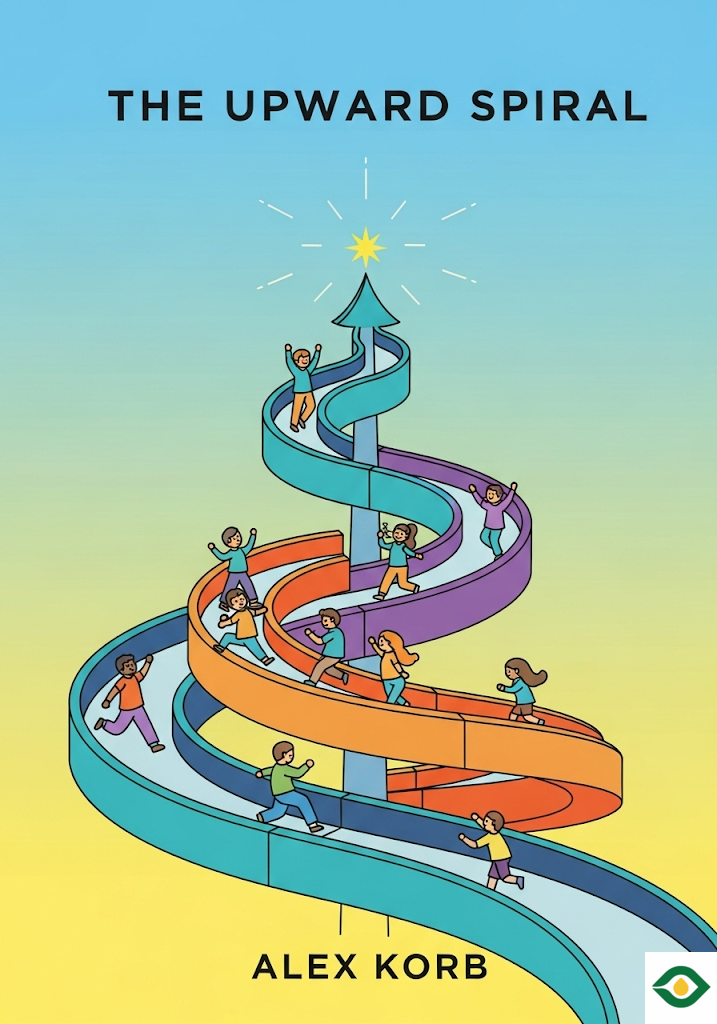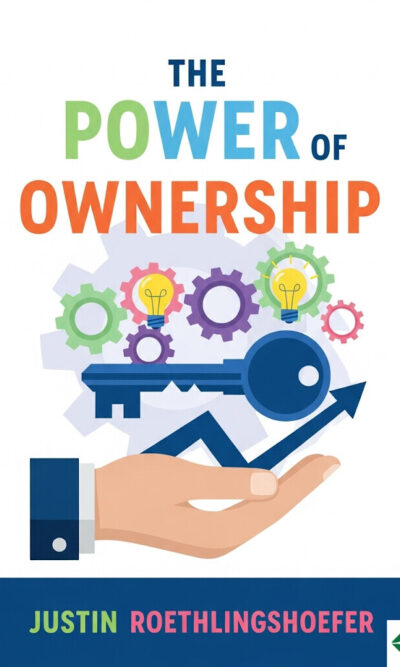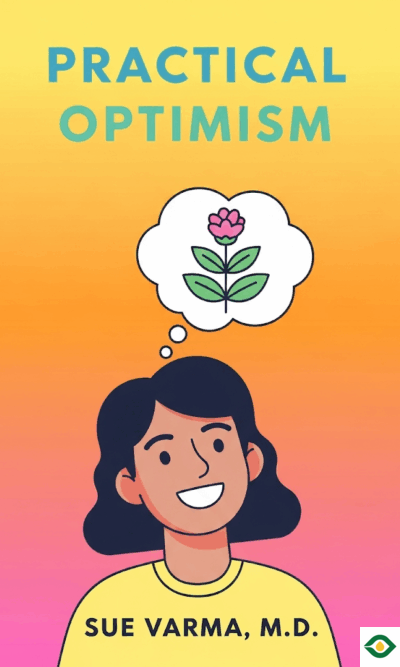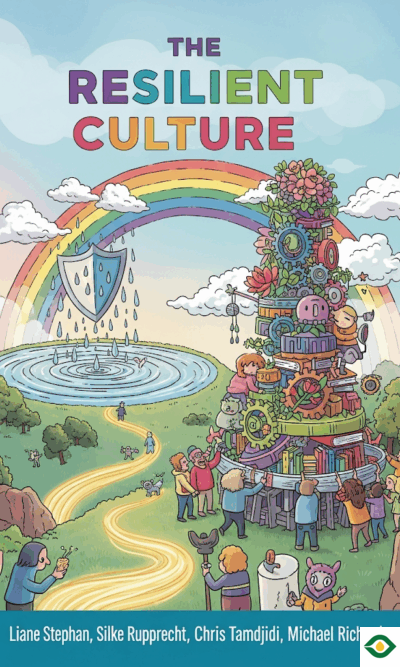Description
Depression can often feel like being trapped in a deep hole with no way out. The more you struggle, the deeper you sink. Many people know this feeling well: waking up heavy, struggling through the day, replaying worries in their minds, and losing energy for things they once enjoyed. In The Upward Spiral, neuroscientist Alex Korb explains that depression is not just about sadness but about how the brain works. The good news is that even though the brain may pull you downward, you can train it to move upward again. Small steps, done consistently, can shift the brain into a positive cycle.
At the core of this idea is the understanding that the brain has different parts with different jobs. One area, often called the “feeling brain,” is designed to handle emotions like fear, stress, and anxiety. Another area, the “thinking brain,” is meant to guide decisions, make plans, and keep the emotional side in check. When you are healthy, the thinking brain balances the emotional brain. But when depression takes hold, that balance breaks down. Emotions overpower thoughts, stress builds, and you feel stuck in a negative loop.
This downward spiral can start in many ways. For one person, it may begin with loneliness. For another, it may come from not exercising or from constant worry. Once it starts, it feeds on itself. If you are lonely, you may avoid making plans with others, which makes you feel more lonely. If you are anxious, you may focus on all the things that could go wrong, which makes you more anxious. Each step pulls you lower.
Worry and anxiety play a huge role in keeping people trapped. Worry is when you think about possible problems. Anxiety is when your body reacts as if those problems are real, even if they are only in your mind. Both keep the emotional brain in control. You begin to expect negative outcomes everywhere. You second-guess your plans, replay mistakes, and become too overwhelmed to act. This is how the cycle tightens.
Another factor is the way depression makes the brain focus more on negatives. Even neutral events can feel heavy. Research shows that depressed people are more likely to interpret neutral faces as sad, or to see ordinary events in a negative light. This bias means even good things lose their shine. To make matters worse, bad habits like overeating, staying up late, or relying on substances can take over. These habits may bring brief comfort, but they also deepen the cycle. The brain’s reward system gets weaker with depression, which makes it harder to feel pleasure. So, people repeat unhealthy habits more and more, trying to feel better, but end up worse.
So how do you escape this? The book explains that you don’t need one big, perfect solution. Instead, you need small, consistent changes that slowly move the brain upward. Each positive action triggers a chain reaction that makes the next one easier. That is the “upward spiral.”
One of the strongest tools is exercise. Exercise is not only good for the body, but it has powerful effects on the brain. It reduces stress, improves sleep, boosts energy, and creates positive chemicals that lift mood. Even small amounts of movement help. A short walk, some stretches, or a quick jog can begin to break the cycle. Exercise also often brings social contact and a sense of accomplishment, which both fight depression.
Another key is decision-making and goal-setting. When life feels uncertain, the brain becomes stuck in worry. Making a decision, even a small one, brings clarity and relief. It gives the brain a direction and a sense of control. Goals are especially helpful because they release dopamine, the chemical of motivation and reward. But goals must be specific and manageable. Instead of saying, “I want a new job,” you might say, “I will send out three job applications this week.” These smaller steps keep the brain engaged and motivated.
Sleep is another critical piece. Poor sleep makes depression worse, and depression makes sleep worse, creating another cycle. To improve sleep, you need good habits—what experts call “sleep hygiene.” This means going to bed and waking up at consistent times, avoiding screens before bed, limiting caffeine, and making your bedroom comfortable and restful. Sleep restores both the body and the mind, giving you strength to handle the day.
Gratitude is also a powerful way to shift focus. Depression narrows attention onto negatives. Gratitude trains the brain to notice positives. Writing down three things you are thankful for each day can begin to rewire the brain’s circuits. Gratitude does not erase real problems, but it makes the mind more balanced. Over time, this habit can make life feel more hopeful and rich.
Social connection is another natural antidepressant. Humans are wired to need others. Being around friends, family, or even strangers can lift mood. Simple acts like talking, hugging, or shaking hands release oxytocin, a hormone that builds trust and warmth. Even just being in a café or park, surrounded by people, can help. Isolation feeds depression, but connection breaks it.
What ties all these strategies together is the idea of gentle momentum. You don’t need to overhaul your life overnight. You just need to nudge your brain in a better direction. Take a short walk. Write one line of gratitude. Make one small decision. Go to bed thirty minutes earlier. Call one friend. Each action sparks a small positive change, and those changes build on each other. Over time, you can climb out of the downward spiral and into an upward one.
The book also reminds us that professional help is important. Therapists, counselors, and doctors can provide support, tools, and treatments that make recovery easier. Seeking help is not weakness—it is strength. Just as you would hire an expert to fix a house, you can seek an expert to guide your mind back to health.
In the end, The Upward Spiral is about hope. Depression can feel like a heavy trap, but it is not permanent. The brain can change. Small steps matter. By exercising, making decisions, improving sleep, practicing gratitude, and connecting with others, you can start to rise. Each action builds on the last, creating momentum toward healing. Life may not change in one day, but with each choice, you move closer to balance, strength, and joy.





